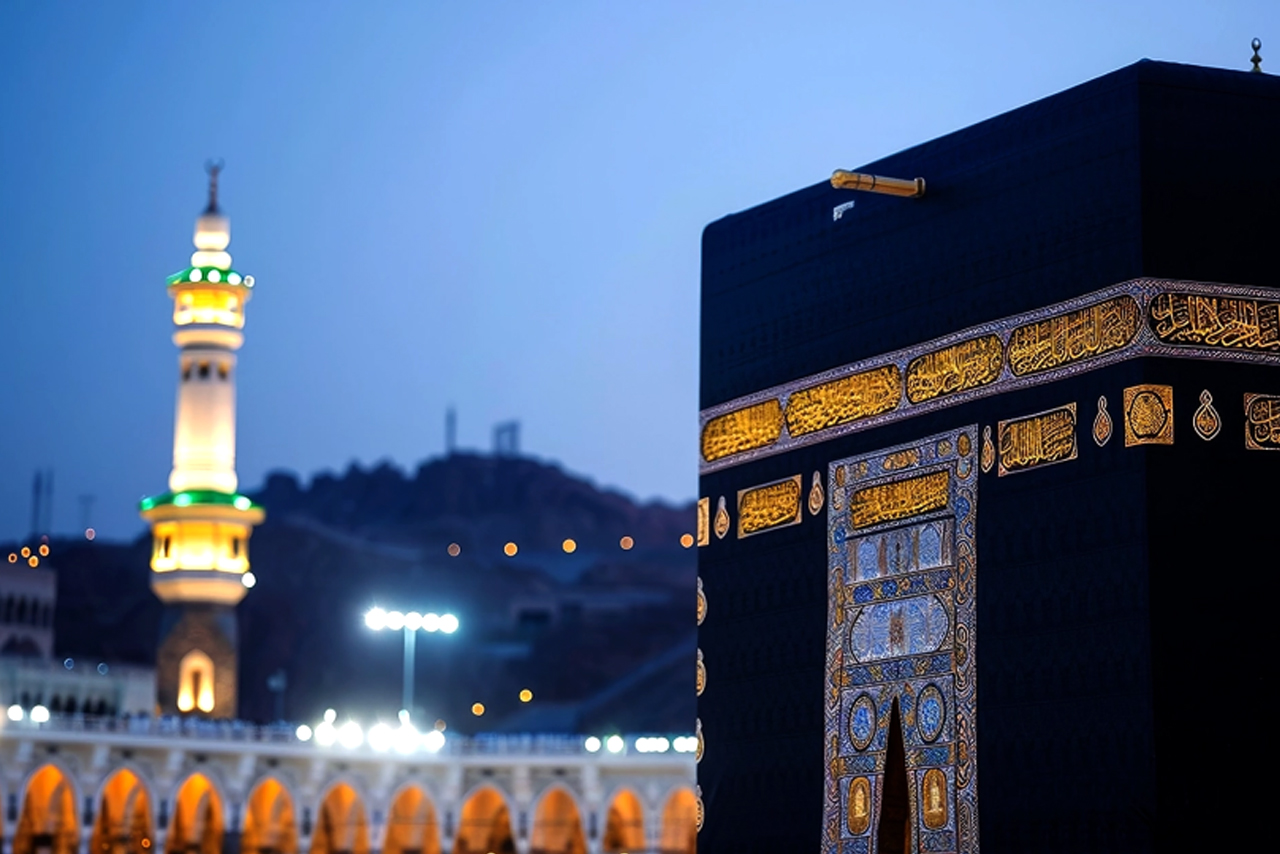
Umrah Nusuk
How to Perform Umrah Correctly?
Learn the steps of Umrah, from Ihram and Tawaf to Sa’i and Tahallul, to ensure an error-free experience.
When visiting the Holy House of Allah for your Umrah, it's essential to understand the detailed rituals, starting from Ihram at the Miqat, followed by Tawaf, Sa’i, and concluding with Tahallul through shaving or trimming your hair.
Let us guide you step-by-step through your Umrah schedule to help you perform it in the best way possible.
Umrah Rituals
1. Ihram
Upon safely arriving in Saudi Arabia, head to the Miqat to begin your first Umrah ritual: Ihram.
Ihram is the intention to perform Umrah and enter into its state. At the Miqat, say: “Labbaik Umrah” or “O Allah, here I am for Umrah.”
The Miqat is the location specified by the Prophet (peace be upon him) for entering the state of Ihram. For instance, Masjid Al-Tan’im, located outside the boundaries of the Sacred Mosque in Makkah, serves as the Miqat for the residents of Makkah and visiting pilgrims.
For men: Wear the two white, unstitched pieces of Ihram: an Izar (lower garment) and a Rida (upper garment).
For women: Wear loose, modest clothing as per Islamic guidelines.
Sunnahs of Ihram:
- Perform Ghusl (ritual bath) and apply perfume to your body, not to your Ihram garments (for men).
- Pray a prescribed prayer before entering Ihram.
- Face the Qiblah and say the Talbiyah aloud (men), repeating: “Labbaik Allahumma Labbaik. Labbaik la sharika laka Labbaik. Innal-hamda wan-ni’mata laka wal-mulk, la sharika laka.”
After entering Ihram, proceed to the Sacred Mosque in Makkah.
2. Tawaf (Circumambulation)
Upon entering the Sacred Mosque, men uncover their right shoulder by draping the Rida (upper garment) under their right arm and over the left shoulder (Idtiba).
Tawaf is likened to prayer, so it requires ablution (Wudu).
Start by touching or pointing to the Black Stone (Hajar Al-Aswad), saying “Allahu Akbar” (Allah is the Greatest). If unable to touch it due to crowding, gesture towards it from afar.
Circumambulate the Kaaba seven times, keeping it to your left. Each round begins and ends at the Black Stone.
Recite personal supplications, remembering Allah, or repeat the Prophet’s (peace be upon him) dua between the Yemeni Corner and Black Stone:
“Rabbana atina fid-dunya hasanatan wa fil-akhirati hasanatan wa qina athab an-nar.”
Sunnahs of Tawaf:
- Ramal (brisk walking): For men, perform this in the first three rounds.
- Touch the Yemeni Corner of the Kaaba, if possible.
- Pray two units of prayer (Raka’at) near Maqam Ibrahim after completing Tawaf. If the area is crowded, pray elsewhere in the Mosque.
After Tawaf, proceed to Sa’i.
3. Sa’i (Walking Between Safa and Marwah)
Men may now cover their shoulders as Idtiba ends.
Sa’i does not require ablution. Begin by ascending Mount Safa and reciting the Quranic verse:
“Indeed, Safa and Marwah are among the symbols of Allah. So whoever makes Hajj to the House or performs Umrah—there is no blame upon him for walking between them. And whoever volunteers good—then indeed, Allah is appreciative and Knowing.” (Quran 2:158)
Begin walking from Safa and end at Marwah, completing seven circuits. Each trip (Safa to Marwah or vice versa) counts as one round.
Sunnahs of Sa’i:
- At Safa and Marwah, face the Kaaba and recite:
“La ilaha illa Allah wahdahu la sharika lahu, lahul-mulku walahul-hamdu wahuwa ‘ala kulli shay’in qadeer. La ilaha illa Allah wahdahu, anjaza wa’dahu, wanasara ‘abdahu, wahazamal-ahzaba wahdahu.” Repeat three times and supplicate.
- Men should briskly walk between the green markers in remembrance of Hajar’s search for water for her son, Prophet Ismail (peace be upon him).
After completing Sa’i, you are nearly done with your Umrah.
4. Tahallul (Ending Ihram)
To conclude your Umrah, perform Tahallul:
For men: Shave the head entirely or trim it evenly.
For women: Trim approximately 1–2 cm from the ends of the hair.
Many clean and hygienic barbershops are available around the Sacred Mosque for pilgrims.
The Blessings of Umrah
Umrah has immense spiritual and physical benefits. Spiritually, it renews your commitment to Allah, purifies your soul, and erases sins. Physically, it strengthens the body and instills a sense of humility and gratitude.
The Prophet (peace be upon him) said:
"Performing Umrah expiates sins and removes poverty."
Common Questions About Umrah
1. Can I enter Ihram from my hotel or home before traveling to Makkah?
While you can bathe and prepare at home or your hotel, Ihram must be entered from the Miqat or its parallel point if traveling by land.
2. Is wearing Ihram garments with buttons or adhesive strips permissible?
Yes, it’s permissible as long as the garments are unstitched and not tailored to fit the body.
3. Can I perform two Umrahs with one Ihram?
No, you must return to Masjid Al-Tan’im to renew Ihram for the second Umrah.
4. Should I continue reciting Talbiyah during Tawaf and Sa’i?
No, the Talbiyah ends upon beginning Tawaf. During Tawaf and Sa’i, engage in personal supplications.
5. Is there a specific dua to recite during Umrah?
While no particular dua is required, focus on heartfelt prayers for yourself, your family, and others, combining both worldly and eternal blessings.
Tips to Avoid Fatigue During Umrah
- Maintain a balanced diet for energy.
- Bring any necessary medications and pray for your health.
- Avoid peak times and direct sunlight.
- Stay calm and avoid pushing during crowded rituals.
At Disola Travel, we are dedicated to providing you with a seamless Umrah experience. Explore our carefully curated Umrah packages at Disola Here,
ensuring the highest standards of religious and administrative guidance for your journey.